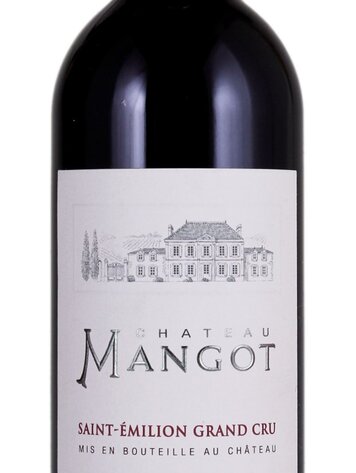96-97pts James Suckling
This is like a baby Mouton this year with blackcurrant, flower, and orange aromas. Medium- to full-bodied with a tight and racy palate that shows persistence and verve. One to watch.
94-96pts Jeb Dunnuck
Another wine that showed beautifully on multiple occasions, the 2022 Château D'Armailhac checks in as 60% Cabernet Sauvignon, 22% Merlot, 16% Cabernet Franc, and the rest Petit Verdot. This deep purple-hued beauty offers up a full-bodied, ripe, sexy profile that carries lots of blueberry, cherry, and cassis fruit, notes of spice, leafy herbs, and chocolate, velvety tannins, good acidity, and a great finish. It should have a broad, lengthy drink window.
93-95pts Vinous
The 2022 Château d'Armailhac was picked from 8 to 27 September and matured in 50% new oak. This has a very pure and sensual bouquet with precocious black plum, cassis violet and espresso scents. The palate is medium-bodied with muscular tannins on the entry, though I find just a little more complexity compared to the Clerc Milon this year. There's a gentle and discrete crescendo toward its delineated and minerally finish. Excellent. This is more like the d'Armailhac that I was familiar with, say, ten years ago. It will surely be irresistible once it reaches its peak. You've been warned.
95pts Decanter
Strongly scented and perfumed on the nose, dark fruits, lively and lithe, supple and smooth on the palate, richly concentrated in terms of fruit density but sleek and stylish on the palate with a burst of bright and fresh blackcurrants and black cherries. Has a tang to it, the acidity and liveliness fills the mid palate before the stony tannins come in towards the end and give this bite and focus. More tense and streamlined than Clerc Milon, but so poised and finessed. This has bite and tension, the Cabernet speaks with liquorice, tobacco and clove subtly giving the spice at the end, but also a fresh mintiness. You can taste the gravel and the clay, putting the terroir in the glass. Really quite profound with concentrated fruit, juiciness and mouthwatering acidity. Fresh and lifted on the finish, you want more of this, but it will take some time to be more charming given its serious nature right now. One to wait for and be glad you did.
92-94pts Wine Advocate
Deep aromas of raspberries, cherries, crushed mint and spices preface the 2022 d'Armailhac, a medium to full-bodied, layered and concentrated wine that's deep, lively and seamless, framed by powdery tannins and concluding with a penetrating finish.
94pts Jane Anson
The difference from a typical vintage colour is more marked in Armailhac than Clerc Milon, where we are more used to deep colours. This in contrast is an extremely intense Armailhac, really stepping into its Pauillac boots, a ton of deep plum, cassis and damson. Great expansion through the palate, beautiful depth of flavour, this is extremely impressive, with an edge of eucalyptus and graphite on the finish, and more grip than usual. Yields down to 26hl/h (there are more new plantings here so young vines). Second vintage with the new winery, and new technical director Lucille Lauilhé. Harvest September 8 to 27, 50% new oak, 3.83ph.
Winemaker's Notes
The vineyard of Château d’Armailhac, an 1855 Classified Growth under the name Mouton d’Armailhacq, covers 70 hectares (172 acres) in the northern part of Pauillac. An extension of the Carruades de Mouton plateau, the Plateau des Levantines et de l’Obélisque, made up of light and very deep gravelly soil, is the preferred terroir of Cabernet grapes. The deep gravelly soil of the Plateau de Pibran rests on a clay-limestone base, giving the Château d’Armailhac wines their characteristic refinement and elegance.
Blend: 60% Cabernet Sauvignon, 22% Merlot, 16% Cabernet Franc, 2% Petit Verdot
History
Chateau d'Armailhac, classified as a Fifth Growth in 1855, is a close neighbor of Chateau Mouton Rothschild. Its 123 acres of vines, surrounding the beautiful grounds of the main house, are planted with the typical varieties of the region: 57% Cabernet Sauvignon, 21% Merlot, 20% Cabernet Franc and 2% Petit Verdot.
The estate, in the d'Armailhacq family since the 18th century and named Chateau Mouton d'Armailhacq after them, was acquired by Baron Philippe in 1933. Between 1956 and 1989, it was called successively Chateau Mouton Baron Phillipe then Chateau Mouton Baronne Phillipe. In 1989, Baroness Phillipine de Rothschild restored part of its original identity, renaming it Chateau d'Armailhac. The wine, aged in oak casks, combines finesse and elegance with powerful, well-structured tannins.











